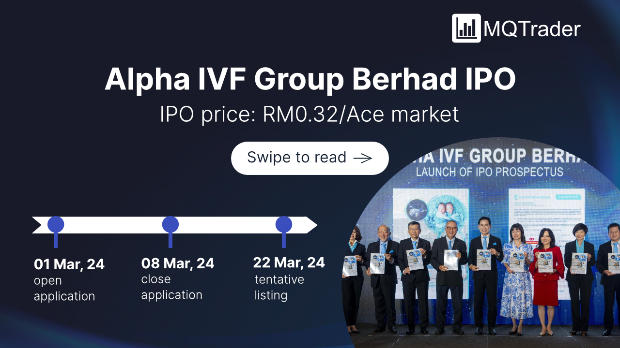iVSA Article 2: Introduction to Fundamental Analysis and Technical Analysis
Joe Cool
Publish date: Sat, 16 Apr 2016, 01:28 PM
Introduction
When it comes to buying stocks, our ultimate goal is to be able to pick and purchase stocks which could generate the greatest return at an acceptable time frame and risk level. To achieve this, there is endless number of method and strategies to support our decision making on which stock to purchase. However, these methods could be broadly categorized to two distinctively different schools of thoughts, which are called Fundamental Analysis (FA) and Technical Analysis (TA). The following will illustrate more on these two approaches in purchasing stocks.
Fundamental Analysis (FA)
The approach on buying stocks basing on FA is to select companies whereby its true value is not correctly reflected in its stock price and plus the believe that fundamentally strong company’s value will grow over the years and so as their stock price.
A fundamental investor will analyze the company’s performance in both quantitative and qualitative dimensions before he makes an investment. In the quantitative part, fundamental investors will look at things that are measurable in numbers such as revenue, profit, debt and etc. This information is often available in the company’s annual financial report or quarterly reports. They believe that companies with strong financial results in the past will generally grow and do well in the future.
As for the qualitative part, fundamental investors will look at qualities of the company which are not measurable in numbers, such as good management team, competition, industry growth prospects etc. Fundamental investors do not look at price charts and price movements of the company’s stock as they believe that these price movements are often short term and fundamentally sound companies will have an uptrend in the longer time horizon.
Fundamental investors are also regarded as value investors as companies that they invest in are believed to have great value and accompanied with good growth.
However, a downside to FA approach is that it is historical-inclined. It is like driving your car forward but looking at the rear-view mirror only. The future prospect of the company is the front and not the back of the car. Nevertheless FA is the most popular approach by analyst, private bankers and value investor.
Technical Analysis (TA)
On the contrary, TA approach of selecting stocks to purchase is purely based on the stock’s price trend, price movement and volume. This approach does not consider the company’s fundamental qualities and well-being as the long term growth of the companies are not of their concern. The goal of the TA is to select stocks that are moving upwards in short term based the belief that stock prices can be trended and history tends to repeat itself.
Examples of popular traditional TA indicators are MACD, RSI, OBV and CCI. Candlestick pattern is also very popular as it can describe the emotion of the market.
Technical analyst generally aims to generate return by buying a stock at a lower price and selling it at a higher price within days or weeks. Technical analyst is also often regarded as traders, as their method of attaining profits are purely based on “buy low sell high” strategy which is equivalent to what traders normally do.
Another school of technical analysis which focuses on both price and volume, called Volume Spread Analysis is made popular by founder, Tom Williams in 1970-1980s. It takes the approach to analyse the market prices and volume with relation to the spread of the price bar and volume bar.
Tom Williams’ Volume Spread Analysis system has been enhanced and based on Richard D. Wyckoff’s century-old and time-tested Price & Volume Trading method. Richard D. Wyckoff is a very famous 1930s trader and observer of syndicate traders. He made observations on the professional activity termed as Composite Operator or better known as Smart Money nowadays.
It has been observed and believed that the Smart Money move the market based on law of supply and demand. More demand means prices will move higher and vice-versa. The activity of these professional operators or Smart money will be shown via Volume Spread Analysis and more importantly, their true intentions are clearly shown on a price chart if the trader knows how to analyse them. Volume is the major indicator for the Smart Money or professional trader.
Locally in Malaysia, we have established the iVolume Spread Analysis (iVSA) system and software called iVSAChart. It is based on Volume Spread Analysis and has an intelligent anticipation of the future direction of market prices in the short term based on the cause of price and volume movement. The "cause" is the imbalance between Supply and Demand. It is this unique study of combination of both price and volume reactions caused by Smart Money that will enable traders and investor who are trained in iVSA system to make profits consistently from the share markets locally and globally.
Watch out for next article in this series of education articles brought to you by iVolume Spread Analysis (iVSA): “What are the differences between Fundamental Analysis and Technical Analysis?”
Interested to learn more?
- Website https://www.ivsachart.com/events.php
- Email: sales@ivsachart.com
- WhatsApp: +6011 2125 8389/ +6018 286 9809
- Follow & Like us on Facebook: https://www.facebook.com/priceandvolumeinklse/
This article only serves as reference information and does not constitute a buy or sell call. Conduct your own research and assessment before deciding to buy or sell any stock. If you decide to buy or sell any stock, you are responsible for your own decision and associated risks.
More articles on iVSA Trading Tips and Plans
Created by Joe Cool | Sep 29, 2016
Created by Joe Cool | Jul 30, 2016


















